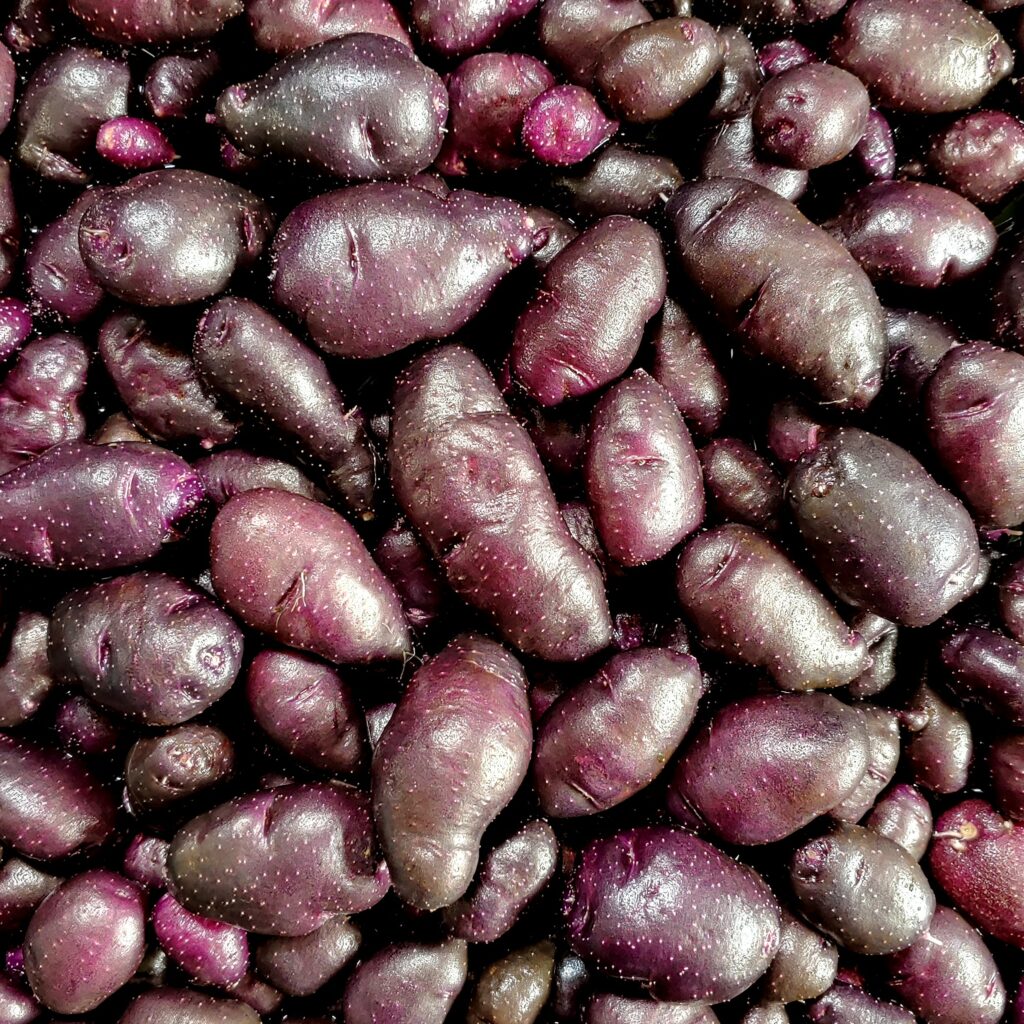Blog, potato (Solanum tuberosum)
Crossing Between Solanum maglia and Domesticated Diploid Potatoes (Part 2)
In part 1 of this post, I discussed the reasons for attempting to hybridize domesticated diploid potatoes with Solanum maglia. The major reason is simple exploration, but S. maglia also has some interesting traits that could be valuable. For one thing, the plants are large, with broad foliage, and might help to produce larger, higher yielding diploid potatoes. For another, there is a possibility that S. maglia has the genetics for self compatibility. That would allow for inbreeding, which can be useful for producing homozygous lines that allow for more predictable breeding.
Back in April, the prospects for this project were looking grim. Most of my seedlings failed to thrive and died before putting on much growth. The survivor was growing very slowly. I figured it was just a matter of time before I would have to declare the attempt a failure. But, the one early seedling hung onto life and eventually produced a vigorous plant. I also had a second flush of seedling germination. Many of those seedlings also died, but I ultimately ended up with six plants that survived to maturity. Six plants is not a lot for this kind of project and the odds that I would get anything useful seemed low. On the other hand, it has been a lot of fun observing the plants to see how they compare to their parent species.
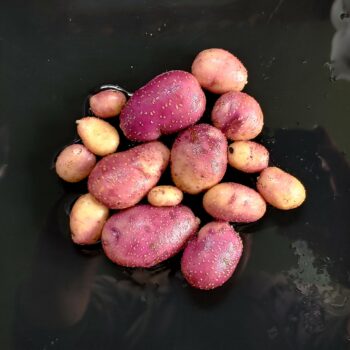
I harvested the plants today and, as expected, they were mostly not very exciting. You get a lot of garbage traits when you cross with wild potatoes and that was the case here. Five of the six plants had long stolons and yields ranging from puny to non-existent. I’m not even sure how many of the plants formed tubers, because the stolons were very long and the tubers very small. They are similar enough that they could all be from just one of the plants, in which case only two of the six plants formed tubers. This could be an indication that the plants have short day tuberization and would make tubers if given a longer season, but I am not interested in selecting short day varieties if I can avoid it.
So, there you have it, my massive tuber harvest from plants 2-6, amounting to a whopping 2.8 ounces. Not much to get excited about. The plants actually set a much larger crop of berries and that is where the story starts to get interesting. The berry set on these plants was not just good, it was perfect. Perfect berry set in diploids is my signal that they should be evaluated for self-compatibility, which is something that I was looking for in these hybrids. There is even stronger evidence of this, because plant 1, which I have not yet discussed, was isolated even farther away, far from any other potatoes because I worried that it might have a disease when it was struggling early on. Plant 1 also set a perfect crop of berries.
The flowers and berries on these plants are worth mention. They were all white flowers, as is the case for S. maglia, although they varied in form. Plant 1 had white flowers that became speckled with blue as they aged. The plants all produced large berries, in contrast to the very small berries of S. maglia. Berries ranged in shape from round to long and pointed.
The plants were equally interesting, with two plants appearing similar in form to domesticated diploids and four looking much more like S. maglia, with very broad leaves.
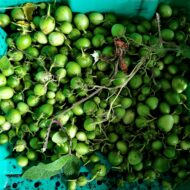 |
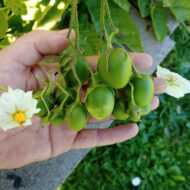 |
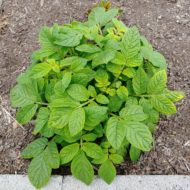 Narrow foliage Narrow foliage |
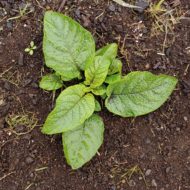 |
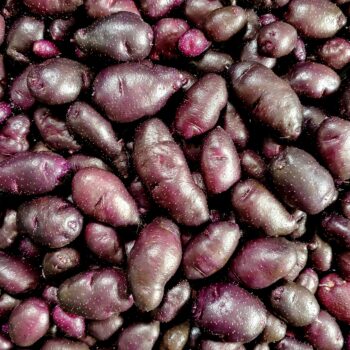
Ultimately, plant 1 was the only one that turned out to be very interesting and, as first generation wild crosses go, it was pretty much a home run. The plant was large and similar in form to domesticated diploids. While it was pretty sickly early on, it eventually caught up and became a very vigorous plant. It flowered heavily and, as I mentioned, set a perfect crop of berries. But its best features were found below ground. It formed a lot of tubers, amounting to 2 pounds, 8 ounces, which is respectable for any potato. The tubers were small, but still a considerable improvement on the tiny tubers of S. maglia. The stolons were short, making this the only plant of the six with manageable stolon length. The tubers appear to be dormant, which is good. The tubers are also quite attractive – glossy and blue. I was very surprised to find that they had yellow flesh as well. It is rare to get anything this promising straight out of a wild cross.
There was one big problem though: the tubers are bitter. That isn’t unexpected. S. maglia is a bitter species and it was likely that any progeny would be as well. These are much less bitter than S. maglia and I suspect that they aren’t too far out of the safe zone, or possibly even in the safe zone and just on the high side. I ate several and found them very pleasant, except for a slight sour aftertaste. It would have been great if they had been palatable, but with all the other good traits, I can’t be too disappointed. The plants formed a lot of berries, which means that there should be a lot of opportunity to select something similar but with lower glycoalkaloids.
Traits of Plant 1
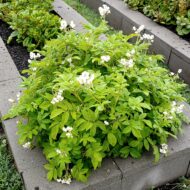 |
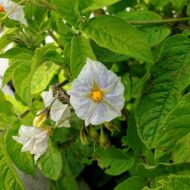 |
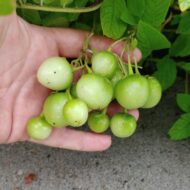 |
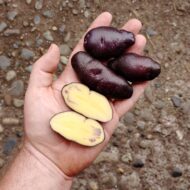 |
Next year, I will do a more careful evaluation to determine if the plants are really self-compatible. If they are, then that will indicate that S. maglia is another source of self-compatibility genetics that can be used in domesticated potato breeding, which would be exciting. I will also make back crosses with this plant to and from domesticated diploids to search for more palatable progeny that retain some of the S. maglia traits.
There is still a lot of work to do, but I am pleased with the results overall and I made more S. maglia crosses this year, so I can try for some more first generation crosses next year.

